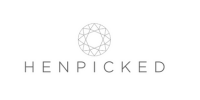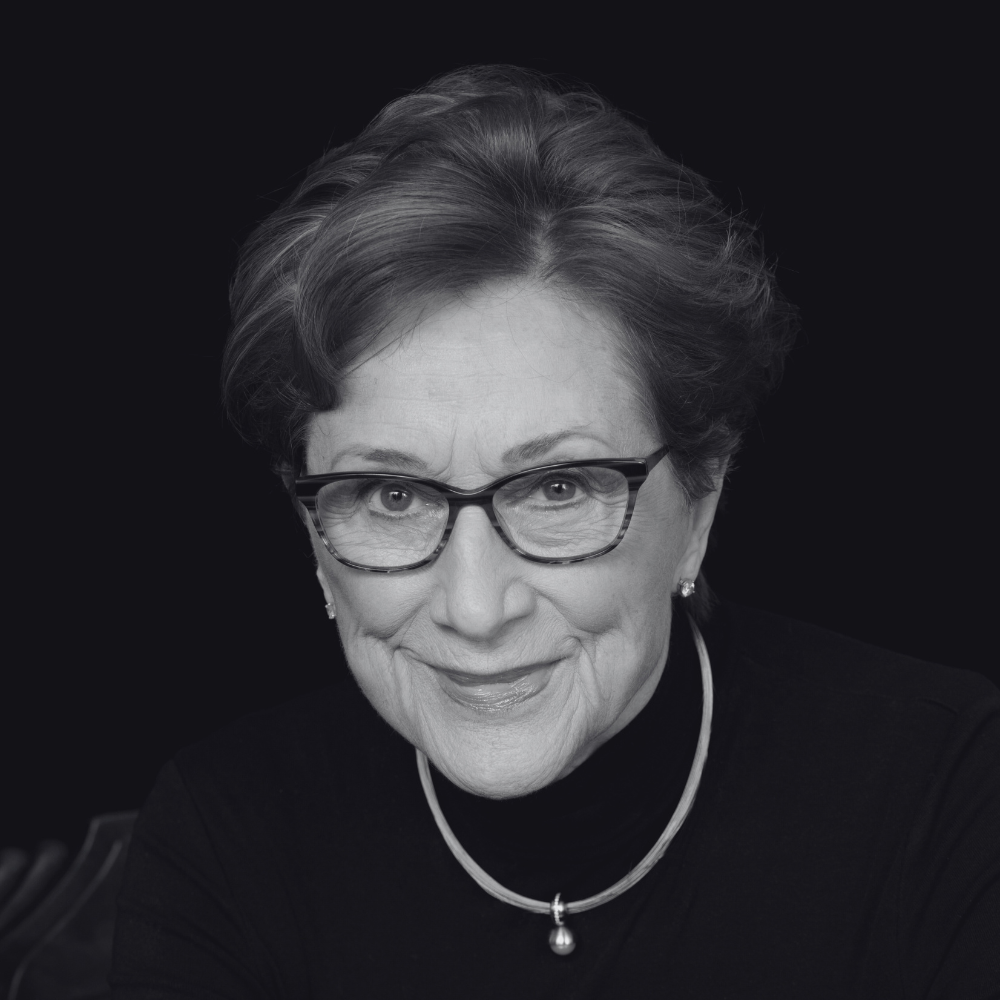Shaping the Future of Work: Wellbeing, Culture & Innovation in the Modern Workplace
The Watercooler Event is a vibrant two-day experience exploring effective ways to create workplaces that empower people to thrive. Join over 6,000 industry experts to exchange ideas, uncover transformative solutions, and celebrate the future of work.
Discover insights from industry leaders on evolving business and people strategies, network with like-minded professionals, and embrace innovative approaches to wellbeing, culture, and productivity.
Meet experts from the following disciplines:
- Wellbeing, Engagement & Mental Health
- HR & Culture
- Diversity, Equality & Inclusion (DE&I)
- Learning & Development
- Employee Benefits
- Occupational Health & Safety
Curating Collaboration with the UK’s Leading Organisations
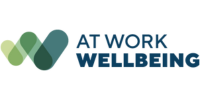


















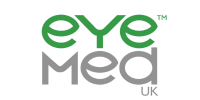
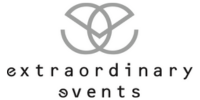


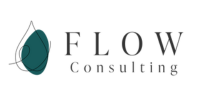
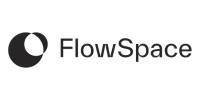








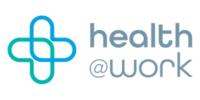



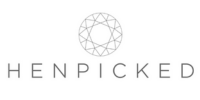






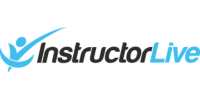

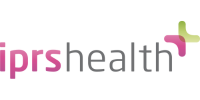
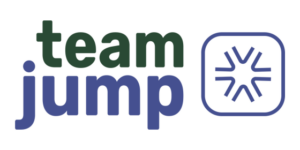
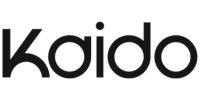





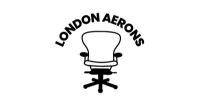
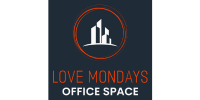

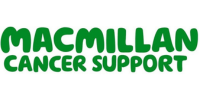



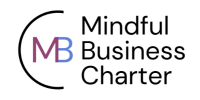
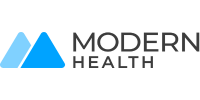









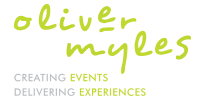

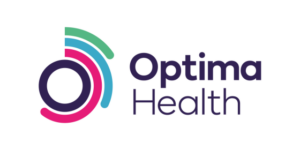




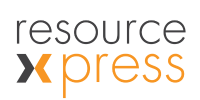

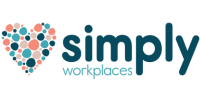
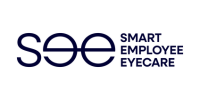




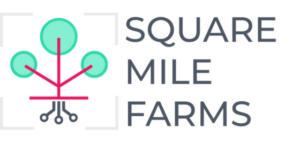



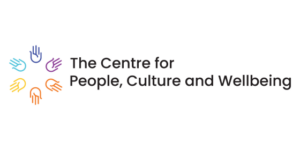







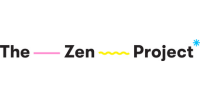



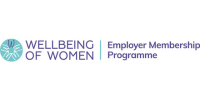




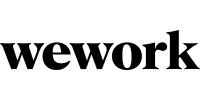
















































































































































































































































AGENDA
Delivering actionable insights to accelerate cultural change.

Speakers
Visionary thinkers from a broad range of business sectors.

Leaders’ Club
The UK’s most innovative leaders.

Exhibitors
Innovative ideas & solutions to build better workplaces.
What’s On
The Watercooler Conference and exhibition content focuses on the key pillars of wellbeing, employee engagement and culture change to enable you to build a comprehensive, strategic approach for a more productive business. As well as a series of focused workshops, the 2025 event featured three parallel tracks running across both days. Now in its fourth year, the conference brings together some of the UK’s brightest and best.

Conference
Three track conferences running side-by-side featuring thought-leading speakers and influencers, it’s held as a ‘silent disco’ format for focused and uninterrupted discussion.

Workshops
Interactive workshop sessions held within the main exhibition hall, featuring deep-dive insight and solution partner case-studies and showcases.
Working Well Beings Podcast
Exploring the Stories of Wellbeing Leaders. This special edition series was recorded LIVE at the Watercooler 2024.

Exhibition
The Watercooler exhibition is filled with leading solution partners who are at the forefront of helping businesses deliver workplace culture and wellbeing programmes.

1-2-1 Meetings
Fast-track your supplier and technology partner search via our 1-2-1 meetings programme. Just indicate your interest on the registration form and we’ll do the rest!

The Office
Get the full 360 Workspace and Workplace Experience at the gathering of workplace experts; Workspace Design, FM, Corporate Real Estate, Workplace Strategy and Property.
2025 Speakers

Dame Carol Black GBE

Peter Cheese


Mohammad Koheeallee


Ruth Jackson


Astha Mittal
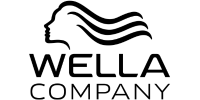

Jason Bloomfield


Carole Smets


Fiona McAslan

2025 Exhibitors
Latest Make A Difference News
Research published in The Times this week found that the majority of employees in the UK would refuse to comply with full-time return-to-the office mandates.
This is despite senior management’s waning enthusiasm for remote working. A September 2024 KPMG survey revealed that 83% of UK CEOs expect a return to full-time office working within the next three years, and in May, INEOS CEO, Sir Jim Ratcliffe, joined other senior business figures by stating that staff should return to the office.
Call for business leaders to rethink hybrid working strategies
A OnePoll survey of 2000 UK professionals engaged in hybrid working, commissioned by global learning and engagement platform Kahoot! in November 2024 revealed that, though a desire for remote working remains amongst UK professionals, 29% of 18-24-year-old respondents and 34% of 25-34 year olds saying they would be more likely to quit their jobs, should more days in the office be mandated) a range of challenges are emerging. These are offset by positives too:
- The mental and physical health impacts of WFH
- 55% of UK workers suffer from ‘video call fatigue’ (with exhaustion after too many video calls experienced most acutely by Gen Z)
- 11% admit that WFH has increased their weekly alcohol consumption. Positively
- 74% believe hybrid working has improved personal relationships
- 63% believe it has had a positive impact on relationships with colleagues.
- WFH Productivity drop:
- 46% of UK hybrid workers now believe they are more productive working in the office than working remotely.
- Only 23% of UK hybrid workers believe that they are more productive at home.
- The new intolerant video call etiquette
- 28% of UK workers are less tolerant of a colleague’s video call being crashed by children or pets than a year ago
- 50% object to other video call attendees eating and drinking.
- Security risks of hybrid working
- 32% of UK workers have eavesdropped on a stranger’s video call (on public transport or in a cafe) seeing or hearing confidential information which could be exploited.
- A growing distrust of fellow remote workers
- Over half of UK hybrid workers believe a colleague has faked technical issues to exit a video call
- 36% think colleagues do less work at home than in the office.
- “That video call could have been an email”
- 87% of Brits believe a proportion of their weekly working video calls are unnecessary
- Over a 1/4 of Brits think that half of their weekly calls could have been resolved by email.
- A third of UK workers consider video calls less productive than in-person meetings, and productivity on video calls has decreased year-on-year.
- WFH And the Home
- 27% of hybrid workers choose properties based on their potential as a video call background;
- 42% of UK workers blur the background due to shame about their domestic environment.
Commenting on the report’s findings, Sean D’Arcy, Chief Solutions Officer at Kahoot! said: “The novelty of remote work has no doubt faded, with many employees reporting video call fatigue, productivity drops, and privacy concerns. Yet, our study shows that a third of UK hybrid workers would quit if WFH days were reduced, underscoring the lasting impact of the remote work shift.
Workers also highlight that increasing interactivity could help alleviate fatigue and make meetings more effective. Rather than forcing employees back to the office, employers should focus on improving hybrid work by optimizing meetings, keeping them shorter, more purposeful, and engaging. Flexibility and collaboration remain key, and at Kahoot! we see how fostering engagement empowers hybrid teams to thrive while meeting the demands of a modern workplace.”
Half of UK to look for new job if RTO mandated full time new research suggests
Sir Charlie Mayfield is leading the government-commissioned Keep Britain Working review, which is exploring how employers can help tackle the UK’s rising levels of economic inactivity and work-limiting health conditions. The review’s first “discovery” phase outlines the scale and drivers of this challenge — and highlights where employers and government can make the greatest impact.
Ushering in a New Era of Workplace Health and Wellbeing
As the review moves into its next stage — focused on prevention through incentives, interventions, and effective case management — the next meeting of the Make A Difference Leaders’ Club offers a unique opportunity to hear directly from Sir Charlie Mayfield, in conversation with Dame Carol Black. This timely discussion will bring clarity to what the findings mean for employers and what actions may be expected.
The session will be hosted by Mark Malcomson CBE, Chief Executive of City Lit, who will also join the conversation.
If you’re a member of the Make A Difference Leaders’ Club and would like to join us for this important discussion — at the intersection of business, health, and policy — please contact claire@makeadifference.events for full details and to reserve your place.
Spaces are limited to 40 and are open only to senior members of the Make A Difference Leaders’ Club. Please note that 20 of these spaces have already been reserved.
About the Make A Difference Leaders’ Club
The Make A Difference Leaders’ Club is a thriving network of like-minded employers, spanning sectors and disciplines, who are committed to improving workplace culture, employee health, and wellbeing.
Our mission is to showcase and advance best practice — and to bring more employers into this vital conversation.
Membership of the Leaders’ Club is free and open to senior representatives of employers, provided your role includes responsibility for workplace culture, employee health and wellbeing, and you are involved in purchasing decisions related to this remit.
Membership is not open to suppliers of workplace culture, health, or wellbeing products and services.
Thanks to the far-sighted support of Personify Health, who are sponsoring the Club throughout 2025, we’re able to keep membership free of charge.
You can find out more about the Leaders’ Club and apply to join here.
You might also like:
Sir Charlie Mayfield to speak at next Make A Difference Leaders’ Club meeting
The Health and Safety Executive (HSE) has launched a free online learning module to help employers get to grips with risk assessment of work-related stress. The module provides all the practical templates, tools and resources needed to get started, or to review existing practices.
This move is another which shows the body’s renewed commitment to ensuring that employers adhere to legal requirements, following its high profile probe into claims of preventable workplace stress at the University of Birmingham (see this article for more information).
Given the record rates of work-related ill health attributed to stress, depression and anxiety, this training aims to provide step-by-step guidance for employers on conducting effective risk assessments, identifying root causes of work-related stress and implementing solutions that are genuinely effective.
Working Minds
The launch coincided with Mental Health Awareness Week (12-18 May) and expands HSE’s Working Minds campaign, which supports businesses in preventing work-related stress and supporting good mental health. It’s also in line with its ‘Protecting people and places’ strategy for 2022 – 2032, which listed reducing work-related ill health, with a specific focus on mental health and stress, as its number one strategic objective.
Kayleigh Roberts from HSE’s Engagement and Policy Division said:
“Preventing work-related stress isn’t just the right thing to do for your workers—it’s also a legal requirement. Our new online learning module aims to make it easier for businesses, particularly small to medium organisations to understand their obligations and what they need to do on a practical level.”
Not about tick boxes
Roberts said this initiative isn’t about “ticking boxes” but about “embedding good practices into everyday business operations”.
HSE highlights six main areas that can lead to work-related stress if not managed properly: demands, control, support, relationships, role, and change.
Employers are encouraged to implement the Working Minds campaign 5Rs approach to support the risk assessment process:
- Reach out and have conversations
- Recognise the signs and causes of stress
- Respond to risks by agreeing action points
- Reflect on the actions taken
- Make it Routine to check in regularly
Employers can register for the online learning module to access step-by-step advice, practical tools, and downloadable templates by visiting the Working Minds campaign website.
You might also like:
HSE’s new training: regulator is getting tougher on stress risk assessments at work
While most workplaces offer mental health support on paper, the real challenge — and opportunity — lies in delivering the right help, at the right time, to those who need it most.
Recent research shows that between 79% and 88% of UK employers provide access to an Employee Assistance Programme (EAP), and 40% offer Private Medical Insurance (PMI). Yet absenteeism and presenteeism persist — and in many cases, the six sessions of counselling typically provided through EAPs are simply not enough.
Bridging the gap
If you’re finding that the support available through your EAP or PMI falls short of meeting employees’ needs, join our free-to-attend Make A Difference webinar, sponsored by Onebright on Wednesday 25th June from 11.00am – 12.00pm to learn:
- Approaches to closing the gap for individuals who require rapid, personalised access to mental health support — including how this can complement existing provision to head off presenteeism, reduce the cost of cover, support neurodivergent colleagues and deliver tangible ROI data.
- How occupational health, HR, and line managers can collaborate to ensure timely, unstigmatised support when needed.
- Why it’s increasingly important to support working parents and extend mental health support to employees’ families.
Featuring expert speakers Shamira Graham, Chief Commercial Officer, Onebright and other panel members to be confirmed.
Who Should Attend:
- C-Suite, HR, Wellbeing, DE&I and Occupational Health Leaders
- Benefits & Rewards, Talent, Engagement and Communication Leaders
- Culture & Transformation Leaders
- Managers, Team Leaders, ERG Chairs & Wellbeing Champions
- Anyone who cares about their people and their business
You can find out more and register to attend here.
New webinar: Smarter strategies for workplace mental Health
The news that the Health and Safety Executive (HSE) is investigating Birmingham University on grounds that work-related stress could have been prevented has been a wake-up call for many employers: psychosocial risk cannot be ignored anymore (see this feature).
Neither can stress be treated on an individual level, either, because it’s a systemic issue and must be tackled on a strategic level (see this article on new research showing unmanaged stress is a measurable business risk).
Yet, while 93% of business leaders globally admit that psychological safety directly impacts business performance, many organisations lack clear strategies to address these related risks. A study by the International Institute of Risk & Safety Management and Workplace Options (WPO), published in February, found that there’s a critical disconnect in wellbeing efforts on this front.
We spoke to a handful of experts for practical advice on how to embed psychosocial risk assessment into your culture.
1. Start by asking these questions
According to Jo Yarker, Professor of Occupational Psychology at Birkbeck, University of London and Managing Partner at Affinity Health at Work, the first step is to ask:
What are the risks that I am assessing?
What have I already got in place to mitigate these risks?
What is our plan for taking action, and who will be involved?
“You can identify risks, but unless you understand where you really are at this point of time, both in terms of your provision and in terms of the governance structures and accountability, you will be less effective in taking appropriate action,” she says.
2. Be clear about definitions
Being clear about definitions and job roles at the start helps with understanding where you are. Dr Laura Hague at Group Safety Manager at engineering firm Mott Macdonald recommends the ISO 45003 guidance can be helpful here. On the back of this guidance and answering the questions above, Mott Macdonald developed its own framework which it encapsulated in an infographic to make accessible to all.
“It shows what wellbeing looks like to us, in all its facets,” says Hague.
3. Plan – thoroughly
Ensure you have a proper planning phase.
“Put parametres around things like who is going to be responsible for what afterwards, and be clear about what budget you’re going to put in place to address any risks identified” says Yarker.
“Because you’re nearly always going to find issues. There’s always going to be room for improvement. So you need to account for running the risk assessment process and then having a clear plan about how you’re going to discuss and identify actions is key.”
4. Incorporate the HSE Management Standards
You may want to consider additional risks – or even outcomes such as job engagement or employee health – but as a minimum it is important to make sure you consider the six key areas in your assessment – work demands, support, control, role, relationships and change.
5. Forget benchmarking
Different employers will need different interventions because their psychosocial risks are different.
“So benchmarking is not particularly helpful in this context. Instead of focusing on ‘am I doing better than my competitor?’ focus on ‘what are our leading risks?’” says Yarker.
“You want to risk manage internally, rather than constantly look to compare.”
6. Consult the SOM’s buyer’s guide
Once you’ve done your risk assessment, you need to understand the actions necessary to improve. This could be the way work is designed, or the way you support your people.
“It’s really important to think about what interventions you are going to put in place or how you are going to help control that risk,” she says.
If you are unsure of what a good intervention looks like, Yarker suggests the SOM’s Buyer’s Guide is a good place to start answering these questions.
“It’s very helpful and comprehensive, so you have to be fully committed to going through it and working out where you are and what you need to achieve your desired outcomes,” she says.
7. Think systemic, not just individual
Often, when employers look at the interventions they’re currently implementing, these are not achieving the outcome they set out for.
This is, in Yarker’s experience, often because there is a series of activities but they’re all targeted at an individual level rather than systemic:
“But if your challenges are around workload or bullying, it doesn’t matter how many individual interventions such as developing mindfulness or time management, or how good your EAP service is, if you don’t address the problem at its source. So matching challenges to activities is really important.”
8. Get senior sponsorship
It’s challenging to embrace the cultural change required to embed psychosocial risk management approach if the person leading the work lacks seniority to make decisions or doesn’t have a voice on the board.
In this case it’s often common for the board only to know about the work when a problem occurs.
“Where staff consultation, employee voice activities, or a stress risk assessments show the same problems are being raised again and again over several months or years, but no action is being taken to address it, then this can become a serious challenge.” says Yarker.
There is no easy ‘how to’ answer to this conundrum except keep working hard on the business case for risk assessing. Not just how wellbeing leads to better productivity, but also how ill health leads to financial detriment.
“We talk about the opportunities associated with wellbeing but we also are clear about: if you don’t invest in wellbeing, there are many risks. And we spell out what these are,” says Hague.
9. Get buy in from ERGs
Another important, powerful shortcut to getting company-wide buy-in is to target and communicate well with your ERGs about what you’re doing.
10. Watch your words
Clever use of language can be an effective way to instigate cultural change.
Mott Macdonald, for instance, changed the name of its function from Health and Safety to Safety and Wellbeing.
“We addressed the issue through language,” says Hague. “It shows our commitment. We wanted to put wellbeing front and centre and give it equal footing. We wanted to give the message that wellbeing is really important to us as a business.”
Hague adds, though, not to expect overnight miracles; cultural change and people realising the significance of changes like these takes time.
11. Collaborate with other parts of the business
One of the key recommendations made in the WPO report is for “stronger coordination across functions” especially across Risk Management, HR and Wellbeing, advising they “must collaborate with clear accountability, supported by executive leadership”.
Creating a clear stakeholder group that spans the organisation is crucial.
Cross function collaboration has been a priority at Mott Macdonald.
“We’ve focused on bringing people on the journey to align wellbeing more with risk and that comes down to, I’ve learnt, the importance of investing in the existing relationships you’ve got and listening,” says Hague.
“We’ve also worked closely with EDI as we see a huge overlap there, particularly with inclusion. If you don’t feel included, there’s no psychological safety and no trust and you’re not going to feel positive wellbeing.”
12. Embed wellbeing risk assessment into line manager mindsets
Another key recommendation in the WPO report is to invest in manager training and support.
“Front-line supervisors play a key role in fostering team wellbeing and should receive training to identify risks and connect employees with support services,” it says.
The HSE stress management competencies, developed by Yarker and the team at Affinity Health at Work, set out the behaviours that are required by managers to prevent and reduce stress at work. Upskilling your managers in these key behaviours can help them to take early action.
Mott Macdonald has made a “conscious decision” to embed stress risk into Health and Safety questions that line managers ask.
“We say to them that ‘we want you to think about how you’re going to do this project in terms of thinking about the client relationship, the scope of work, the budget, the programme…. We get them to think about: how can we design the project most effectively to reduce the risk of negative wellbeing on staff? How can we eliminate risk and prevent harm?”
13. Give your managers time to properly risk assess
“It’s all very well adding stress to a risk register but it can’t be a tickbox exercise. Ensuring it’s meaningful and sustainable, comes down to your people – particularly managers – asking the right questions. That takes time,” says Carole Spiers, CEO of International Stress Management Association.
She advises asking your managers:
- Do you make time to speak with your staff?
- Do you know what to say?
- Do you know how to bring these conversations to a respectful and constructive close?
“In my experience often managers won’t start the conversation because they’re not sure how it’s going to end and how long it will take,” she says. “And there are no miracle cures here. You can only risk assess by asking employees about their workload and their relationships, and how they’re coping. That takes time.”
14. Commit to genuinely finding out what is causing stress in your company
Spiers is clear: if you want to understand the causes of stress in your organisation, you must make a real commitment to uncovering them.
Yes, you could ask a direct question like, “Do you have any mental health issues?” and often receive a polite “No”. “Technically, you’ve ticked the box,” she says. “But that adds no value. It tells you nothing about the actual risks in your business.”
Instead, she recommends using tools that encourage honest feedback:
“I would advise an anonymous survey, because very few employees will raise their heads above the parapet. But the risks will be there, so it’s about chipping away to discover them. That’s where the line manager’s skill set is crucial—being able to build trust and create a safe space where someone feels it’s okay to speak up.”
You might also like:
14 things to do to get Stress Risk Assessing right
In an increasingly polarised, divided world where we’re seeing a resurgence of nationalism and social exclusion, the workplace has a unique opportunity to be a place where people can build bridges.
Employers must use their unique position to reframe division, balance different values, shift perspectives, encourage collaboration and listening and have a culture that welcomes diverse, but respectful, opinions.
It is key to stop conflict quickly before it escalates from a breakdown in interaction into a full blown workplace dispute. We must seek positive partnerships to stop division, find ways to align, find common value and purpose and transform uncertainty to safety.
Could mediation be right for you / your employer?
Mediation can effectively facilitate this process. Mediators are more than peacemakers; they are strategic, build trust, help reframe ideas, and uncover why each individual has a fixed position. We have to be able to stay calm, be patient, and sit in the fire.
Mediators need a willingness to hear and listen to everyone’s perspective, not just allow one narrative, and to combine the pieces to form a bigger picture. We are neutral, listen without judgment, and acknowledge without being adversarial.
Mediators empower people to explore options for resolution and not just look at, and follow, one route. Resolution needs to focus on what you want or need, rather than who is right or wrong.
Not allowing people to speak is dangerous
Shutting down dialogue is dangerous and often means we go underground instead of having open discussions. It is much better to understand and explore where there is upset. Apart from moderating, the best way to deal with conflict, when it happens online particularly, is to model better ways of discussing issues.
The parties involved often want you to be a magician to solve the problem, so they can sometimes turn on you. Mediators help them find their own solutions. As a mediator, it is not my job to say whether you are right or wrong, but to focus on the consequences of conflict. We cannot bury our heads, but equally we can never go back; we can only go forward.
Unravelling conflict can be complex, and all parties must work through the issues; there may not be just one easy solution. Our role as mediators is to give people the tools and skills to manage challenging conversations or difficult dialogue themselves.
What are the pitfalls of mediation?
Mediators can be drawn into wanting to offer a perspective and share a solution. Like myself, mediators are often lawyers, so we have opinions and are used to solving problems. However, it actually builds trust if you don’t offer solutions and instead facilitate those involved in finding their own. This gives both parties the responsibility for their own responses, mindsets, and ways forward.
There will always be a shifting balance between peace and conflict. Utopia is not a practical ideology, whether we are discussing world conflict or conflict in the workplace.
We tend to take a simplistic view of issues because we have learned, or been fed, a narrative. If we take a step back, don’t take the narrative at face value, explore it more deeply, and have some form of dialogue about what we do and don’t like, we choose a resolutionary rather than a revolutionary path.
‘Resolutionary’ not revolutionary path
We can all act as mediators and make a difference by modelling healthy behaviour and choosing a different approach to conflict that stops provoking division and polarisation. Anyone can develop mediation skills and tools to find better ways of approaching conflict and differences. However, it is also good to have one or two internal champions or ‘ReSolutionaries’ trained in the skills, tools and mindset of mediation.
Initiating open, constructive, and respectful dialogue around some of these issues in small groups and communities allows us to explore our feelings and responses and have big conversations. We must be more open to hearing those we disagree with instead of cancelling them.
We must remember that the consequences of not resolving conflict are far greater than the consequences of compromising, regardless of who is morally or legally right or wrong. We have to understand that, at work and societally, no one is coming to save us. The focus has to be on calm and respectful dialogue and a general will and commitment for reduced conflict.
About the author
Jane Gunn is a former corporate lawyer who now uses her vast experience of conflict resolution in the workplace to transform business relationships to create vibrant, collaborative, profitable working cultures. Her mission is to help people and organisations to manage change, challenge and crisis without suffering massive financial and personal cost, at a time when disagreements with colleagues are at an all-time high. She has spoken at the United Nations, The White House and the European Commission. She is also a former President of the Chartered Institute of Arbitrators.
You might also like:
Difference at work: “We must be more open to hearing those we disagree with, instead of cancelling them”
While stress risk assessing has been talked about for years, employers of late have been taking a much more proactive approach than ever before.
Jo Yarker, Managing Partner at Affinity Health at Work and Professor at Birbeck, University of London, who ran psychosocial risk assessments for Shell and AstraZeneca alongside her PhD nearly twenty years ago, points to several major turning points.
“Longterm sickness absence due to stress, depression and anxiety is at a record high. Employers are seeing the costs of unaddressed psychosocial risks through absence, presenteeism and turnover,” she says.
“There is also recognition that many wellbeing initiatives are not addressing the root causes of stress – we need to move away from a ‘sticking plaster’ approach to look at the way work is designed and managed, and to deliver on investment.”
Following Australia?
Another driver is that Australia updated its Work Health and Safety Regulations to include mandatory, regular psychosocial risk assessments, requiring employers to assess and control risks such as job demands, poor support and bullying – encouraging a more preventative, rather than reactive, approach to mental health.
“Even though Australia may be a long way physically from the UK, we are all more interconnected than ever due to social media, so its generating lots of interest” says Yarker.
Over stress awareness month (April), the HSE increasingly put out communications on good risk assessment practice and has been taking a more proactive approach itself recently. For instance, its probe into the University of Birmingham, following claims that employees are experiencing preventable workplace stress, has caused a stir.
University of Birmingham HSE stress probe
For a long time, there has been recognition that organisations should be assessing and should be taking action – to address both physical and psychosocial risks. But many employers don’t know their obligations when it comes to psychosocial risk, and enforcement in this area has often been viewed as challenging. The fact that it is doing this with Birmingham University is a visible act of enforcement. So if the HSE is prepared to do this for this organisation, how many others could it launch official investigations for?
Certainly, we at Make a Difference Media have heard many an employer doubting the HSE’s ‘teeth’ and its commitment to enforcing rules – this news could put paid to that. One challenge we’ve heard from employers has been knowing clearly what actions should be taken to make a change.
As Yarker says:
“If you’ve got asbestos on your roof, the evidence-based action is very clear. But for psychosocial hazards, the interventions are varied and depend on context, situation and budget, etc. This makes it more difficult to set expectations or advise one-size-fits-all approach.”
A shift is needed
As these types of interventions are often owned and led by HR and/or the senior management team, and are related to overarching business strategy, they require different skills from professionals.
“There’s a real shift needed for professionals in this space – it requires a partnership approach, working with new parts of the organisation, those that are relevant to things like job redesign or career progression, for example,” says Yarker.
For all these reasons, HSE has commissioned Affinity Health at Work, Institute of Occupational Medicine, Institute of Employment Studies and the Society of Occupational Medicine to create Project Oscar which is looking at the most effective ways to mitigate risk in different situations. (Affinity Health at Work is running another consultation later this year and welcomes input from all employers, see here).
Catalogue of interventions
The end vision is to create a “catalogue of interventions” to be used to prevent work related stress which are based on evidence. This should be a powerful tool in the industry’s fight against the perception that Health and Wellbeing is not evidence-based enough and associated with disparate, peripheral interventions that are not known to be effective.
“The challenge in the wellbeing space to date has been that the intervention isn’t always matched to the outcome that the employer wants to achieve,” says Yarker.
This is exactly what one engineering consultancy, Mott Macdonald, found. It started running wellbeing activity in 2015 but, at this time, “it was about support and awareness and we had many initiatives going on run by local employees, but little strategy and we didn’t know if the spend was actually benefiting our organisation,” says Dr Laura Hague, Group Safety Manager at Mott Macdonald, who oversees the firm’s global programme.
Adding Wellbeing to Safety
Hague comes from a traditional Health and Safety background and, so, when Wellbeing was added to the function she spearheaded centralising all activity and asking the question: what are we looking to achieve?
“Health and Safety is about trying to get to the root cause of symptoms. So if we don’t understand why something’s happened, it’s really hard to say ‘this is what we’re going to do to prevent it happening again’,” she says.
Consequently, Mott Macdonald has been focusing on really understanding the issues its employees face from a psychosocial perspective. It’s done this through data gathering via surveys and listening to its people to understand the story beneath the numbers: if people have taken time off work why has this been?
What are the root causes of stress?
“If you look at days lost due to health and safety accidents versus days lost due to work related ill health, the latter is far bigger; most of it is psychological/ psychosocial in nature,” says Hague.
Now there’s a protocol where the employer asks: how can we prevent this happening again? What steps can we take? What were the risks and what controls are we going to now put in place?
As part of Mott Macdonald’s mission to give back to the industry, Hague has led the creation of an industry guide to help organisations balance commercial and people focussed priorities. (For more info, see “Managing wellbeing risk: A Practical Guide for the Engineering Consultancy Sector”.)
We need specifics
Hague advocates, like Yarker, that we need, as an industry, to work towards specifics.
“A lot of the time, wellbeing interventions can be very generic and broad and it can be difficult to work out ‘how is that going to help the individuals on this project?’” she says.
She suggests coming back to the management standards, and clarity about role and scope, is helpful as is “agreeing with our clients about acceptable behaviour and what we will do, and how we might escalate things, if there are relationship issues on a project”.
Management standards are a strong foundation
With over 30 years of experience in the industry, Carole Spiers, Founder of the International Stress Management Association, has seen the landscape of Workplace Wellbeing evolve significantly. Yet despite these changes, she maintains that the management standards remain a strong foundation—even if they’re no longer new.
“I know the standards are quite old now, but they will still hold you in a good state,” she says.
She highlights the ongoing relevance of being alert to key risk areas such as excessive workload, role ambiguity, and unrealistic expectations.
Subjective nature of stress
One of the greatest challenges, she believes, is the subjective nature of stress in the workplace.
“Some people will perceive a situation as ‘pressure’, while others will experience it as ‘stress’,” she explains. “So how do you assess that risk? It’s not easy—and, for me, you can only do it effectively by making time to talk to your people.”
And that, she says, is where organisations often fall short.
“Employers and line managers frequently say, ‘But we haven’t got time’. Yet the truth is—you can’t afford not to make time. If you want to reduce stress and protect the wellbeing of your people, those conversations are essential. You have to manage that stress. Unless we carve out time then, whether stress appears on your risk assessment or not, makes no difference.”
You might also like:
Stress Risk Assessing: why is the ante being upped now?
Harry and Meghan, the Duke & Duchess of Sussex, are backing a hard-hitting campaign to raise awareness of online abuse, and consequent mental ill health, amongst young people in particular.
The high profile couple is doing this by putting their business’s name, The Archewell Foundation, to a public art installation featuring 55 giant smartphones, each showing the face of a young person who took their life due to online abuse.
By using these arresting ‘monuments’ of mobile phones the campaign aims to confront online harm head-on, showing clearly the real-world consequences of digital harm.
Moving beyond stats to stories
The advertising experts behind the idea, M&C Saatchi, wanted to find a way – as many employers also strive to achieve with their communications – to move beyond statistics and news headlines and encourage viewers to resonate personally with the message. It concluded this innovative way of telling the stories behind the statistics was the most effective way to do this.
The campaign garnered widespread media attention, including national coverage from BBC News. It sparked public conversations around online safety and the responsibilities of technology platforms.
The technology was created by Giant iTab and its 55 smartphone installations were exhibited on a rooftop in New York City.
Harry and Meghan have talked openly about how online abuse has affected them personally in the past, and their worries for their two children, prompting them to set up a programme to support parents.
But it’s not just children experiencing bullying or harassment online. There’s also much concern in the business community that the move to hybrid is leading to more digital bullying. For instance, a survey from The Workplace Bullying Institute in 2021 showed that 43% of remote workers said they had experienced workplace bullying, with the number of tribunal claims for bullying rising 44% in the UK in 2022.
You might also like:
Harry & Meghan shine a light on online abuse in smartphone campaign
If you missed last week’s The Watercooler and co-located The Office events, or you simply want to revisit the content, we’ve put together a page of the presentations that we’ve been given permission to share here.
We’ve had great feedback to the event from attendees. Karen Kidd, Group Health & Wellbeing Manager, People & Places, Lloyds Banking Group shared: “I thoroughly enjoyed The Watercooler & the Office 2025. I listened, I chatted, I networked. My head is FULL of ideas, with lots of new connections (and friends) made. A huge thank you to the organisers. Roll on next year”.
Meanwhile for Somayeh Rahimi, Group Wellbeing Manager, Gamma, the highlight was the Leaders’ Club workshop focused on what members can do to shape the supplier landscape and drive change with our collective employer voice. She said: “Thank you for another wonderful event! The Leaders’ Club workshop was so informative and I’ve taken away a lot I can implement”.
You can access the PDFs of the presentations that we have permission to share here.
You can find out more about joining the Make A Difference Leaders’ Club here.
For more insights from The Watercooler and The Office events, take a look at these articles:



